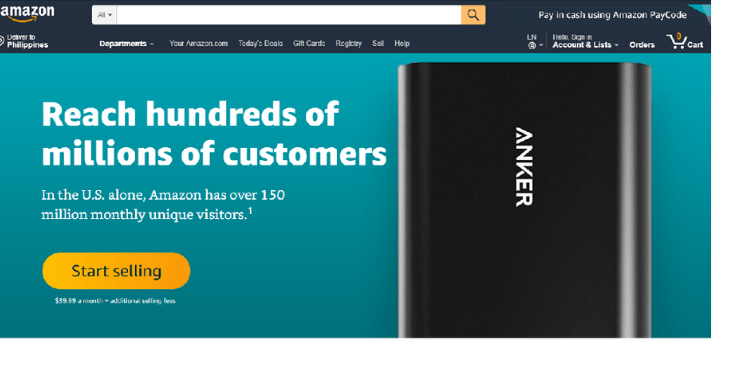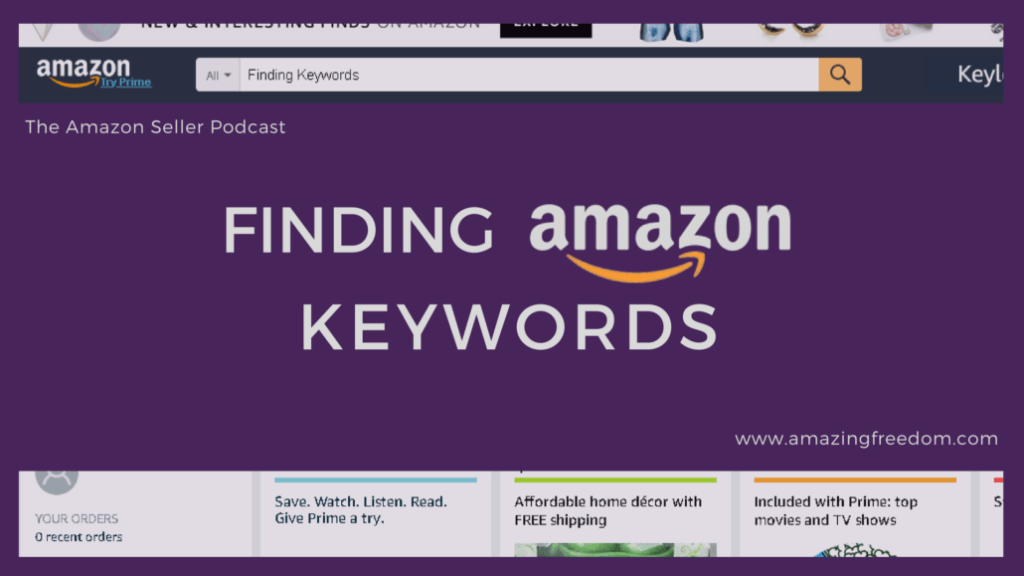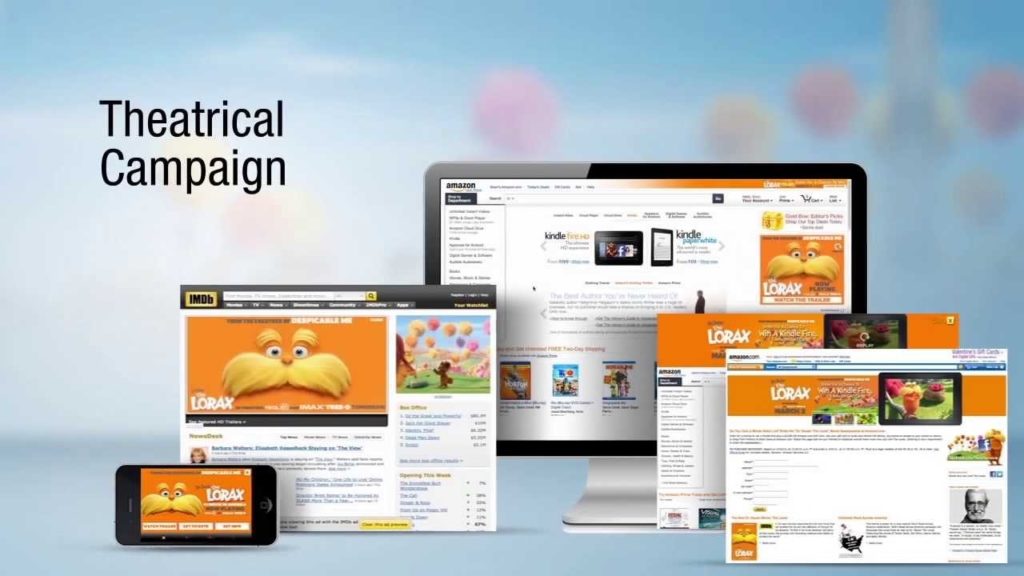

Quick Links
Quick Links

Advertising on Amazon may seem like a daunting, expensive prospect. Even if you’re not a new seller, the potential to overstep your budget is there. Fortunately, Amazon has had a lot of time to make their ad interface easy to work with for sellers like you and me.
The Situation
You have a couple product listings up. You’ve spent some time perfecting these product pages with high-resolution photos and consistent text. Maybe you’ve even gotten a review or two on one of your products. Unfortunately, your product doesn’t seem to be selling fast.
You’ve seen other Amazon sellers talking about Pay-Per-Click (PPC) advertising. You’re not sure how it works, or even if it will work. It looks like a gamble and a potential budget eater. You want to know more about it though.
How PPC Works
Pay-Per-Click is a system of advertising in which the seller pays every time someone interacts with the ad, rather than every time someone sees it. Amazon sellers set up campaigns in Seller Central with maximum bid prices and daily budgets to compete for the ad spots. Whoever is willing to pay the most for the top ad spot gets it.
PPC relies on keywords to know which ads to bid on. These keywords then match what Amazon customers are typing in the search bar. Doing the keywords right means you’ll never waste money on an irrelevant ad.
Finding Keywords

From Amazon
Before you even run a campaign, you can get keyword data from Amazon. Go to the Amazon home page and start typing in your product name. Before you hit enter, a list of suggestions pops up. These suggestions are potential keywords to target for your product. Try typing in variations of your product type and name to get more ideas for your list.
From the Web
The web offers a plethora of options for Amazon specific services. Free tools such as Sonar and Keyword Tool offer lists of keywords aimed at specific categories. Using a couple of different applications will give you an extensive list of keywords to test. There are also paid keyword tools, which you may wish to consider later.
In addition to Amazon specific tools, you can use general SEO keyword tools. Programs like AdWords and Answer the Public offer general SEO keyword searches. The advantage of using general keyword tools is your listing may turn up on searches originating outside of Amazon. You may also be ahead of the Amazon trend since consumers change how they search over time.
Setting Up a Campaign

Set a Budget
Before you can start setting up a campaign, it’s time to set a budget. You already have some costs, such as buying your initial product stock. Now you need to figure out what you can afford to spend on advertising on Amazon.
If you don’t have any idea yet as to the ideal average conversion rate, it is safe to assume for the time being that only about 1 in every 10 people who click an ad on Amazon actually buy the product. Unfortunately, you must pay for those other nine clicks too. Whatever you decide to bid on a given keyword must be multiplied by an average of ten. This gives you the actual cost spent on advertising for that sale.
Some people prefer to keep their records in percentages. Once you have a campaign running, you’ll see a figure labeled advertising cost of sale (ACoS). ACoS is the amount spent on advertising divided by the amount of product sales. If you add up the FBA fees, shipping cost, unit cost, and cost of advertising, what’s left is profit.
Where is Campaign Manager?
The campaign manager is an advertising feature available in Seller Central. To find it, hover over the advertising tab in the upper left of your Seller Central dashboard. Once you click it, the program leads you into setting up your first campaign.
How do I set up a campaign?

The first step is to name your campaign. This name is solely for your tracking purposes. It will not show up anywhere else.
The second field is a daily budget. This figure can change later, and you won’t hit it every day. For a reasonable estimate, take your monthly ad budget and divide it by the number of days in the month. Once you have more than one campaign going, divide the figure you just got by the number of campaigns.
Then you’ll see the date field. This determines the duration of the campaign. It is especially useful for advertising when you plan to have a sale, so advertising can automatically stop.
The last field on this page is the targeting selector. Automatic targeting means Amazon takes over how your product page is advertised. Manual targeting gives you more control, including setting up all the keywords you found earlier in this tutorial.
Automatic Campaign
With an automatic campaign, there’s no need to do keyword research. Instead, all you must do is select a product and figure out a default bid.
To get a ballpark bid to start with, you’ll need to know your daily budget for that product and how many sales you’d like to make in a day. Divide the daily budget by the number of sales you want to make. Then multiply that number by 10% to account for all the people who click but do not buy. That figure is an excellent place to start your default bid.
Manual Campaigns

Manual Amazon campaigns take the same initial steps as automatic ones. Then, once you’ve chosen your default bid, you get to select your keywords. Amazon will try to help you with those, but you’re not obliged to listen. Instead, you can supply your own keywords.
You’ll have the opportunity to input separate groups of keywords and tell Amazon exactly how closely each one needs to match those words to display the ad.
Broad Match — anything close to any word in the key phrases you type.
Phrase Match — the words appear in order but are not necessarily the only words.
Exact Match — it must be a word for word match.
Add as many keywords as you would like. Then hit save to start the campaign.
Optimizing Your Campaigns
Experienced Amazon sellers go in and view the data on their ads at least once a week. They check which keywords are working, which ones aren’t, and which ones aren’t getting the sales. They then remove the money hole keywords, add new keywords for trial, and keep track of their advertising spend. This process is optimizing a campaign so you can avoid mistakes.
Results

Each time you successfully obtain the top sponsored ad spot, there’s a significantly higher chance your product will be bought. Each click is an opportunity to make a sale you would not have had otherwise. Sometimes ad campaigns take a bit to hit their sweet spot, so have patience.
Conclusion
Advertising on Amazon is a fantastic way to boost the sales of products. It takes a little bit of work to set up, and a bit of continued labor to maintain. However, the rewards are quite significant for that initial effort.
